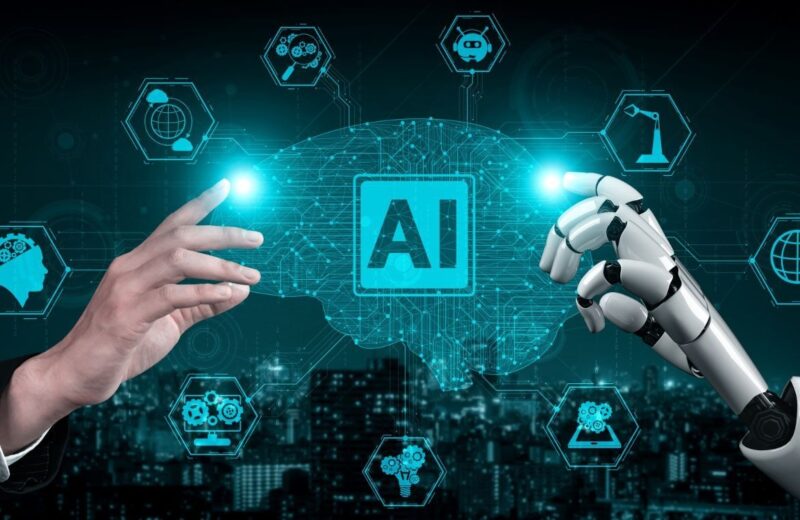Corporate leadership enters 2025 in a state of rapid transformation as organizations respond to the fast-moving shifts in technology, new workforce expectations, and global pressures.
Leaders face demands that extend far beyond traditional executive responsibilities and must navigate an environment shaped by AI, changing employee priorities, and constant disruption.
A set of emerging trends reshapes how executives operate, develop, and guide teams.
Six major forces now influence what it means to lead a modern company, and each one pushes leadership roles toward a more flexible, informed, and people-focused direction.
Trend #1: Tech-Savvy and AI-Literate Leadership

Executives in 2025 operate in an environment where technological fluency becomes a defining requirement.
Basic digital familiarity no longer meets organizational exp ectations, as AI now drives forecasting accuracy, operational efficiency, talent assessment, and strategic planning.
Leaders gain strength by learning how AI processes data, identifies patterns, and supports complex decisions.
A stronger grasp of AI functions allows executives to ask better questions, interpret results more effectively, and push teams toward more informed actions.
Organizations recognize the urgency of these skills and introduce programs that accelerate AI adoption.
Many companies provide hands-on AI workshops, immersive simulation labs, and real-time training platforms where leaders practice fast decision-making supported by predictive tools.
CEOs regularly describe AI as a major generator of business value and expect leadership teams to work alongside these systems as strategic partners.
A section that outlines several capabilities modern executives must develop can be presented with bullet points.
Key capabilities include:
- AI literacy for interpreting insights and outputs
- Skill in evaluating predictive analytics
- Familiarity with automation workflows
- Comfort with digital experimentation and iteration
- Ability to integrate AI into everyday decision cycles
Executives who cultivate these capabilities stay aligned with shifting industry demands.
AI literacy enables leaders to assess risk with greater clarity, anticipate changing market dynamics, and allocate resources with higher precision.
Experience combined with strong technical fluency positions executives to guide teams confidently through rapid transformation.
Trend #2: Human-Centered and Empathetic Leadership

Employee well-being plays a central role in organizational success, prompting leadership teams to adopt approaches grounded in emotional intelligence and authentic care.
An empathetic style supports higher retention, stronger engagement, and healthier team collaboration.
Modern employees expect psychological safety, transparent communication, and leadership that acknowledges personal needs.
Leaders who display genuine concern inspire loyalty and create conditions where individuals feel valued and supported.
Workforce research continues to show that engagement directly affects profitability, motivating companies to reinforce trust-building and relational leadership.
Human-centered approaches produce better outcomes because employees perform with more energy when they believe leadership respects their experiences and contributions.
Leaders benefit by investing in mental health resources, purposeful communication, and structures that encourage autonomy and career development.
Core elements include:
- Emotional intelligence in everyday interactions
- Active listening and authentic dialogue
- Psychological safety as a cultural standard
- Support for autonomy and meaningful work
- Transparent feedback loops that build trust
An organization guided by compassionate leadership becomes more resilient during disruption.
People-first executives encourage stability, cooperation, and long-term commitment, strengthening overall performance.
Trend #3: Continuous Learning and Mentorship Culture

Lifelong learning becomes an essential expectation for modern executives.
Leaders remain effective when they actively refresh their skills, stay aware of emerging tools, and participate in structured development programs.
Organizations move away from command-driven leadership and lean toward mentorship models that prioritize growth and guidance.
Companies invest significantly in learning platforms that integrate training into daily routines. Leaders participate in coaching programs, reverse-mentorship exchanges, and collaborative learning circles that support ongoing improvement.
Organizations also benefit from external partnerships, such as FD Capital, which connects companies with part-time and fractional CFOs who bring real-world strategic insight and mentorship into leadership structures.
CEOs take on roles as developmental coaches who cultivate talent, encourage reflection, and support long-term progression.
Common practices include:
- Regular participation in skill-based training
- Engagement with mentorship and coaching cycles
- Reflection on leadership behaviors and outcomes
- Collaboration in peer-learning groups
- Emphasis on shared learning throughout the organization
A culture driven by continuous development increases organizational adaptability and creates strong talent pipelines prepared for future challenges.
Trend #4: Adaptive and Agile Management Models

Rapid market shifts require leaders to adopt adaptable mindsets and agile management structures that support speed and experimentation.
Long planning cycles give way to shorter, more flexible approaches that prioritize frequent iteration and swift response.
Leaders who encourage quick testing, feedback gathering, and incremental refinement position their organizations for higher innovation output.
Curiosity and learning agility turn into crucial executive traits.
Leaders must respond to challenges without hesitation and promote environments where teams feel comfortable taking calculated risks.
Markets move quickly, and organizations benefit when bureaucratic hurdles shrink and decision flows accelerate.
Agile leadership often includes:
- Rapid evaluation of changing conditions
- Encouragement of experimentation and prototyping
- Support for flexible planning cycles
- Willingness to adjust strategies in real time
- Comfort with uncertainty and evolving priorities
Agile management empowers leaders to guide teams with confidence as complexity increases.
Flexible systems strengthen resilience and help organizations maintain momentum during transition.
Trend #5: Inclusive and Diverse Leadership as a Competitive Advantage

Strategic gains arise when leadership teams create environments that support varied perspectives and experiences.
Inclusive leadership enhances creativity, broadens problem-solving capacity, and reduces blind spots that limit decision quality.
Many companies elevate cultural intelligence and bias-awareness training to strengthen leadership capability and improve employee confidence in corporate culture.
Chief Diversity Officers shift into more influential roles that directly impact strategy, recruiting, and communication.
These leaders influence how talent pipelines are structured and help senior teams adopt practices that reduce bias in hiring and promotion.
Companies that commit to accessible leadership development create pathways that allow a wider range of individuals to rise into senior roles.
Key priorities include:
- Culturally aware communication practices
- Bias-reduction training for leadership teams
- Equitable hiring and promotion systems
- Representation in decision-making environments
- Collaborative involvement of CDOs in C-suite strategy
Organizations that prioritize inclusion experience stronger cohesion, higher engagement, and improved financial outcomes, reinforcing the strategic value of this trend.
Trend #6: Cross-Functional and Collaborative Executive Teams

Leadership success now depends on strong collaboration across multiple departments.
Siloed thinking slows progress and restricts innovation, prompting organizations to reinforce cross-functional alignment.
Executives benefit by learning to influence without positional authority, communicate with clarity, and coordinate decisions across interconnected business areas.
Companies introduce structured cross-functional programs that expose leaders to several departments.
Simulation-based development, role-rotation models, and shared-project assignments expand executive skill sets and increase cohesion across teams.
Many organizations adopt co-leadership structures that distribute responsibility and accelerate strategic execution.
Flatter operational structures encourage open dialogue and faster information flow.
Important skills involve:
- Clear and consistent communication
- Relationship-building across departments
- Strategic alignment and shared goal-setting
- Influencing without formal authority
- Conflict resolution and negotiation
Stronger collaboration produces more aligned strategies and greater organizational agility, allowing companies to respond swiftly to shifting conditions.
The Bottom Line
Leadership in 2025 transforms into a model defined by technological fluency, empathy, adaptability, inclusiveness, collaboration, and constant learning.
Organizations reshape leadership expectations, restructure performance indicators, and redefine executive accountability to align with these demands.
Businesses that invest in these trends position themselves for long-term success in a fast-changing corporate environment.

